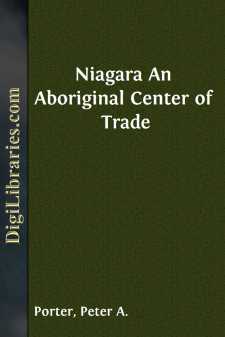Categories
- Antiques & Collectibles 13
- Architecture 36
- Art 48
- Bibles 22
- Biography & Autobiography 813
- Body, Mind & Spirit 142
- Business & Economics 28
- Children's Books 16
- Children's Fiction 13
- Computers 4
- Cooking 94
- Crafts & Hobbies 4
- Drama 346
- Education 46
- Family & Relationships 57
- Fiction 11829
- Games 19
- Gardening 17
- Health & Fitness 34
- History 1377
- House & Home 1
- Humor 147
- Juvenile Fiction 1873
- Juvenile Nonfiction 202
- Language Arts & Disciplines 88
- Law 16
- Literary Collections 686
- Literary Criticism 179
- Mathematics 13
- Medical 41
- Music 40
- Nature 179
- Non-Classifiable 1768
- Performing Arts 7
- Periodicals 1453
- Philosophy 64
- Photography 2
- Poetry 896
- Political Science 203
- Psychology 42
- Reference 154
- Religion 513
- Science 126
- Self-Help 84
- Social Science 81
- Sports & Recreation 34
- Study Aids 3
- Technology & Engineering 59
- Transportation 23
- Travel 463
- True Crime 29
Niagara An Aboriginal Center of Trade
by: Peter A. Porter
Description:
Excerpt
The printed story of Niagara dates back only three centuries; and during the first three decades of even that period the references to this wonderful handiwork of Nature—which was located in a then unexplored region of a New World, a Continent then inhabited only by warring tribes of superstitious Savages—are few and far between.
Three facts relating to this locality—and three only—seem to be proven as ante-dating the commencement of that printed story.
That its "Portage" had long been in use.
That it was then, and long had been, a spot for the annual assemblage of the Indians "for trade."
That here, and here only, was found a certain substance which the Aborigines had long regarded as a cure for many human ills.
Before 1600, everything else that we think we know, and like to quote about Niagara, is only Indian Myth or Tradition; possibly handed down for Ages, orally, from generation to generation, amongst the Aborigines; or, quite as probable, it is the invention of some Indian or White man Mythologist of recent times; the presumption in favor of the latter being strengthened, when no mention of the legend, not even the slightest reference thereto, is to be found in any of the writings of any of the authors, who (either through personal visits to the Tribes living comparatively near to the Cataract, or from narrations told to them by Indians living elsewhere on this Continent) had learnt their facts at first hand, and had then duly recorded them,—until long after the beginning of the eighteenth Century.
It is probably to the latter class—modern traditions—even with all their plausibilities, based upon the superstitious and stoical nature of the Aborigines—that several of the best-known Legends concerning Niagara belong.
Three of those legends, especially, appeal to the imagination. One relates to Worship, one to Healing, one to Burial,—embracing the Deity, Disease, and Death.
The Legend of Worship is the inhuman yet fascinating one that the Onguiaahras (one of the earliest-known orthographies of the word Niagara), who were a branch of the Neutrals, and dwelt in the immediate vicinity of the Great Fall—and, according to Indian custom, took their name from the chief physical feature of their territory—long followed the custom of annually sacrificing to the Great Spirit "the fairest maiden of the Tribe"; sending her, alive, over the Falls in a white canoe (which was decked with fruits and flowers, and steered by her own hand) as a special offering to the Deity for tribal favor, and for protection against its more numerous and more powerful foes.
And that, at the time of this annual Sacrifice, the tribes from far and near assembled at Niagara, there to worship the Great Spirit. If this Legend is based on fact, it would certainly have made the locality a famous place of annual rendezvous; and at such a rendezvous the opportunities for the exchange of many and varied commodities—"trade"—would surely not have been neglected.
The Legend of Healing is, that anyone, Brave or Squaw, if ill, would quickly be restored to perfect health could they but reach the base of the Falls, go in behind the sheet of falling waters,—entering, as it were, the abode of the Great Spirit,—and, on emerging therefrom, be able to behold a complete circular Rainbow—which should symbolize the Deity's absolute promise of restoration to perfect health.
...

